Climate Change Impacts on Ecosystems
Overview
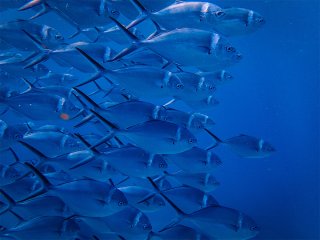
Ecosystems are communities of living things, including plants, animals, and microorganisms, that interact with each other and the physical world.1 People depend on ecosystems for many benefits, such as food, water, clean air, building materials, and recreation. Ecosystems can be big, like the one that surrounds Yellowstone National Park,2 or as small as a single fallen tree. They can also overlap with one another or be part of larger ecosystems. These connections between ecosystems also make them dependent on one another, and not simply dependent on the organisms within them.
Climate change affects ecosystems in many ways. Climate controls how plants grow, how animals behave, which organisms thrive, and how they all interact with the physical environment.3,4 As habitats experience different temperatures, precipitation patterns, and other changes, the organisms that make up ecosystems feel the effects. All U.S. regions are experiencing the impacts of climate change but impacts vary by area and ecosystem.5
-
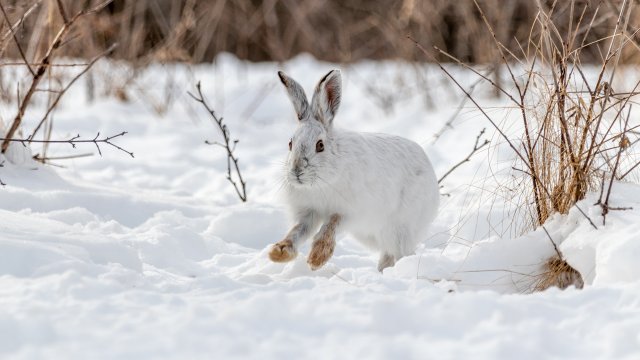
Impacts on populations' ability to survive. The white coat of the snowshoe hare makes it less visible to predators in the winter. But earlier snowmelts are making the hare stand out more against the brown forest floor, increasing its vulnerability.
-

Increased spread of invasive species. Cheatgrass is an invasive species that threatens ranches in the western United States. It degrades soil nutrients and can lead to a loss of biodiversity.
-

Changes in the timing of natural events. In Alaska, brown bears are switching their diet from salmon to elderberries as the berries ripen earlier due to a warming climate.30 When bears eat less salmon, it also affects other animals in the food web, like birds that feed on the salmon carcasses bears leave behind.31
-
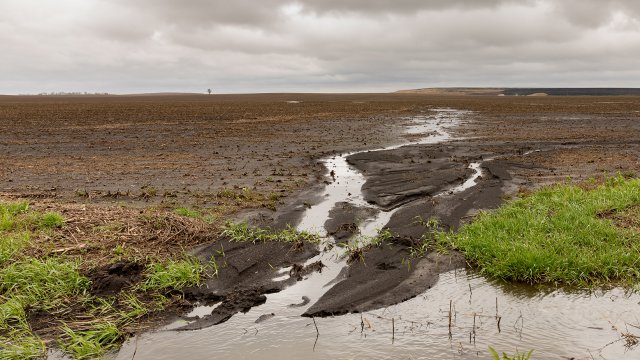
Reduced ecosystem services: erosion control. Salt marsh grasses help hold soil in place. In some areas, a change to the species balance, possibly due to changing temperatures, has allowed a grass-eating marsh crab to dominate, resulting in less grass to control erosion.32
-
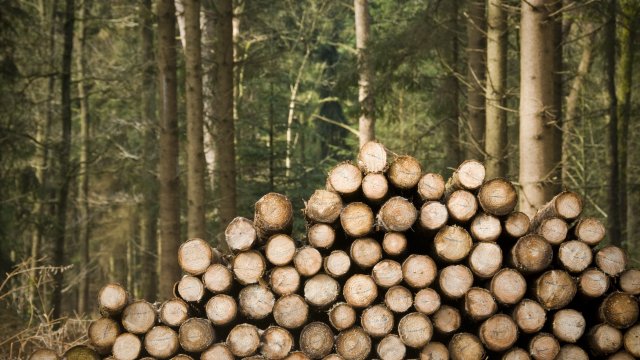
Reduced ecosystem services: lumber. Ecosystems provide Americans with needed materials such as wood. Changing precipitation patterns can influence the frequency and severity of wildfires, threatening this ecosystem service and important economic sector.
People are taking many actions to help ecosystems adapt to climate change impacts or minimize the effects. For example, federal agencies that manage the nation’s natural resources are now considering climate change in policies and planning. At the local level, many groups are preserving habitats and restoring ecosystems that have been damaged or disturbed in the past.
Explore the sections on this page to learn more about climate impacts on ecosystems:
- Top Climate Impacts on Ecosystems
- Ecosystems and the Economy
- Population Impacts
- What We Can Do
- Related Resources
Top Climate Impacts on Ecosystems
Climate change affects ecosystems at multiple levels, from the populations that make up ecosystems to the services they provide to communities, economies, and people. Four key impacts are described in this section.
1. Changes in Species and Populations

As the climate changes, some species will adapt by changing their behavior, physical characteristics, or how their bodies function. Others will not be able to adapt. As a result, climate change could lead to expansions, reductions, or extinctions of some populations. These changes, in turn, can affect the overall biodiversity of a region.
Plants and animals may also change the geographic range they inhabit in response to changing climatic conditions. Changing temperature and water conditions have already altered the ranges of many plants and animals.6 As temperatures have warmed in the United States, some land animals have moved to the (typically cooler) north by an average of 3.8 miles per decade.7 Some marine species have also shifted north by more than 17 miles per decade.8
2. Changes in the Timing of Natural Events and Cycles
Many plants and animals rely on cues in nature, including temperature and water conditions, to trigger certain stages of their life cycles. As the climate changes, these cues can change at different rates, or potentially not at all. As a result, species that depend on one another at certain times of the year may no longer be in sync.
For example, plankton are an important food source for young fish, but they tend to react more quickly to changes in temperature than the fish. This means the plankton might not be as available when growing fish need it most. Also, if a bird migrates at the same time each year, it could reach its destination to find that, due to shifting temperatures, its main food source grew too early and is no longer available.10

3. Changes in Ecosystem Interactions
Climate change is also changing the way species and populations interact with the environment and one another. These impacts can be felt throughout an entire ecosystem.
For example, climate change is increasing the spread of invasive species in some areas.11 An invasive species is one that is not native to an area. Invasive species can outcompete native plants and animals, bring in new diseases, and cause other problems. These changes can create significant environmental and economic harm.
As ocean water warms, invasive fish species, such as the tropical lionfish, are expected to move north along the Atlantic coast, threatening native species.12 This can also hurt humans, as lionfish are venomous and can sting people.
Climate change can also affect food webs. A food web is the whole set of feeding relationships among different organisms in an ecosystem. At the bottom of a food web are organisms like plants and plankton. Other animals, higher in the web, rely on them as food sources. Climate impacts on any part of a food web can affect the whole system, and even other ecosystems altogether. From the example above, if young fish cannot find enough food in the estuaries, their predators in the ocean could feel the effects as well.
4. Altered or Reduced Ecosystem Services
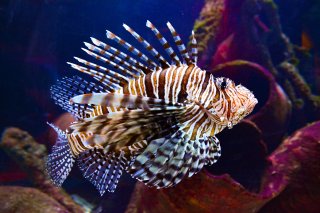
Climate change is affecting some of the critical services that ecosystems provide to society.13 For example, ecosystems provide a bounty of food to people. Climate changes, like drought and heat, could affect the availability and quality of some foods, as well as farmers’ ability to grow certain crops.14
Climate change can also affect ecosystem services such as carbon capture and storage. Forest ecosystems play a critical role in the carbon cycle, helping to absorb carbon dioxide from the atmosphere and store it in roots, soil, and the forest floor.15 But climate-driven increases in wildfires, flooding, pests, and diseases can limit the ability of an ecosystem to provide this important service.16
For more specific examples of climate change impacts in your region, please see the National Climate Assessment.
Ecosystems and the Economy
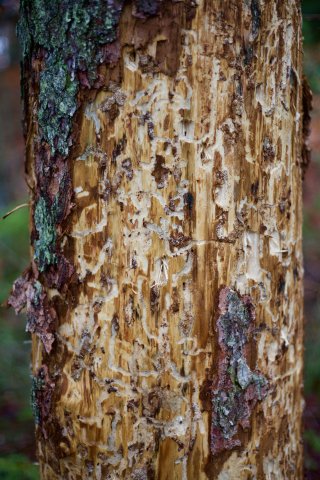
Ecosystems and their benefits—often referred to as ecosystem services—support key aspects of human existence. As a result, they are the foundation to large parts of the economy. Globally, ecosystem services are worth an estimated $125 to $145 trillion per year.17
Climate change impacts affect the livelihoods of millions of Americans, including fishers, loggers, ranchers, and farmers. For example, the stress caused by rising water temperatures and ocean acidification could cost the shellfish industry hundreds of millions of dollars.18 Shifting ranges for certain fish mean that fishers may need to travel farther to catch them or purchase new equipment to reach those areas.19 These shifts are projected to result in losses of hundreds of millions of dollars each year by the year 2100.20
Agriculture in the United States will experience economic impacts with climate change. More frequent and severe heatwaves, droughts, and extreme rainfall events along with expanding pest ranges can disrupt agriculture in many ways. 21 Overall, warming is expected to have negative effects on yields of major crops, though crops in some individual locations may benefit from earlier springs and milder winter weather.22 Disruptions to agriculture and food supply chains can have economic impacts for farmers and farmworkers and affect the price of food.
Climate change also affects the tourism and recreation industries. Harmful algal blooms already cost the country nearly $1 billion each year from the loss of recreational fishing and boating revenue.24 Damage to coral reefs due to climate change is projected to result in $140 billion in total lost revenues to the U.S. recreation industry by 2100.25 Communities that depend on tourism will feel these economic impacts the most.
Population Impacts

Some communities depend on ecosystems and their services more than others, including some Indigenous and rural communities. As ecosystems change, some groups also may be able to adapt better than others due to geographic, social, or economic factors.
Indigenous communities have a unique relationship with the environment. Climate change impacts on ecosystems can harm Indigenous peoples’ ability to preserve and sustain their cultural heritage.26,27 Shifting animal ranges can disrupt Indigenous peoples’ ability to hunt and fish as the animals move beyond their tribal lands.28
Many rural communities depend on ecosystem-related livelihoods, including farming, fishing, and raising livestock. People in these areas are more likely to see economic impacts when faced with ecosystem challenges, such as invasive species and decreased soil quality.29
What We Can Do
We can limit climate change’s impacts on ecosystems in several ways, including the following:
- Prevent the spread of aquatic invasive species. Inspect and wash your boat before moving it to a new body of water to remove “hitchhiking” plants and animals, like zebra and quagga mussels.
- Share information. Engage in citizen science efforts to provide accurate, up-to-date information about climate change in the United States.
- Report invasive species. Reporting invasive species to the proper authorities can help them manage plants and animals that threaten native populations.
- Treat ecosystems responsibly. Practice management techniques that improve ecosystems’ health and help them be more resilient to a changing climate. For example, plant native vegetation and conserve water. In arid places planting native or drought resistant species conserves water.
- Conserve lands and grow prudently. Development can break up lands into smaller segments that can isolate species, making it harder for them to migrate or adapt to climate change. Smart conservation planning can help preserve lands and help populations thrive.
Related Resources
- Fifth National Climate Assessment, Chapter 8: “Ecosystems, Ecosystem Services, and Biodiversity.”
- U.S. Climate Resilience Toolkit: Ecosystems. Provides information on how ecosystems affect air and water.
- Ecosystem Services. Provides information and decision support tools around how to manage ecosystem services.
- U.S. Department of Agriculture's Climate Hubs: Forests & Woodlands. Provides a collection of recent information about climate change impacts on forests and woodlands, as well as ongoing adaptation and mitigation measures.
- U.S. Geological Survey (USGS): Ecosystems. Presents the latest USGS-generated science on ways to sustainably manage ecosystems.
- U.S. Fish and Wildlife Service: Climate Change. Summarizes climate change impacts, adaptation strategies, and mitigation strategies with a focus on ecosystems.
- EPA’s Report on Seasonality and Climate Change. Summarizes the state of the science on observed changes relating to seasonality in the United States.
Endnotes
1 Lipton, D., et al. (2018). Ch. 7: Ecosystems, ecosystem services, and biodiversity. In: Impacts, risks, and adaptation in the United States: Fourth national climate assessment, volume II. U.S. Global Change Research Program, Washington, DC, p. 270.
2 U.S. Department of the Interior, National Park Service. (2022). Greater Yellowstone ecosystem. Retrieved 01/29/2022.
3 Lipton, D., et al. (2018). Ch. 7: Ecosystems, ecosystem services, and biodiversity. In: Impacts, risks, and adaptation in the United States: Fourth national climate assessment, volume II. U.S. Global Change Research Program, Washington, DC, p. 276.
4 McElwee, P. D., et al. (2023). Ch. 8: Ecosystems, ecosystem services, and biodiversity. Fifth National Climate Assessment. U.S. Global Change Research Program, Washington, DC, p. 8-35.
5 Lipton, D., et al. (2018). Ch. 7: Ecosystems, ecosystem services, and biodiversity. In: Impacts, risks, and adaptation in the United States: Fourth national climate assessment, volume II. U.S. Global Change Research Program, Washington, DC, p. 279.
6 McElwee, P. D., et al. (2023). Ch. 8: Ecosystems, ecosystem services, and biodiversity. Fifth National Climate Assessment. U.S. Global Change Research Program, Washington, DC, p. 8-18.
7 Lipton, D., et al. (2018). Ch. 7: Ecosystems, ecosystem services, and biodiversity. In: Impacts, risks, and adaptation in the United States: Fourth national climate assessment, volume II. U.S. Global Change Research Program, Washington, DC, p. 281.
8 Lipton, D., et al. (2018). Ch. 7: Ecosystems, ecosystem services, and biodiversity. In: Impacts, risks, and adaptation in the United States: Fourth national climate assessment, volume II. U.S. Global Change Research Program, Washington, DC, p. 281.
9 McElwee, P. D., et al. (2023). Ch. 8: Ecosystems, ecosystem services, and biodiversity. Fifth National Climate Assessment. U.S. Global Change Research Program, Washington, DC, p. 8-20.
10 McElwee, P. D., et al. (2023). Ch. 8: Ecosystems, ecosystem services, and biodiversity. Fifth National Climate Assessment. U.S. Global Change Research Program, Washington, DC, p. 8-17.
11 McElwee, P. D., et al. (2023). Ch. 8: Ecosystems, ecosystem services, and biodiversity. Fifth National Climate Assessment. U.S. Global Change Research Program, Washington, DC, p. 8-24.
12 Lipton, D., et al. (2018). Ch. 7: Ecosystems, ecosystem services, and biodiversity. In: Impacts, risks, and adaptation in the United States: Fourth national climate assessment, volume II. U.S. Global Change Research Program, Washington, DC, p. 278.
13 McElwee, P. D., et al. (2023). Ch. 8: Ecosystems, ecosystem services, and biodiversity. Fifth National Climate Assessment. U.S. Global Change Research Program, Washington, DC, p. 8-26.
14 Bolster, C.H., et al (2023): Ch. 11. Agriculture, food systems, and rural communities. In: Fifth National Climate Assessment. U.S. Global Change Research Program, Washington, DC, USA., p. 11-4.
15 Domke, G.M., et al. (2023). Ch. 7: Forests. Fifth National Climate Assessment. U.S. Global Change Research Program, Washington, DC, p. 7-16.
16 Domke, G.M., et al. (2023). Ch. 7: Forests. Fifth National Climate Assessment. U.S. Global Change Research Program, Washington, DC, p. 7-8.
17 U.S. Climate Resilience Toolkit. (2021). Ecosystems. Retrieved 03/18/2022.
18 Lipton, D., et al. (2018). Ch. 7: Ecosystems, ecosystem services, and biodiversity. In: Impacts, risks, and adaptation in the United States: Fourth national climate assessment, volume II. U.S. Global Change Research Program, Washington, DC, p. 284.
19 Lipton, D., et al. (2018). Ch. 7: Ecosystems, ecosystem services, and biodiversity. In: Impacts, risks, and adaptation in the United States: Fourth national climate assessment, volume II. U.S. Global Change Research Program, Washington, DC, p. 278.
20 Moore, C., et al. (2021). Estimating the economic impacts of climate change on 16 major U.S. fisheries. Climate Change Economics, 12(1).
21 Bolster, C.H., et al (2023): Ch. 11. Agriculture, food systems, and rural communities. In: Fifth National Climate Assessment. U.S. Global Change Research Program, Washington, DC, USA., p 11-4.
22 IPCC (Intergovernmental Panel on Climate Change). (2022). Climate change 2022—Impacts, adaptation and vulnerability: Working Group II contribution to the Sixth Assessment Report of the Intergovernmental Panel on Climate Change (H.-O. Pörtner, D. C. Roberts, M. Tignor, E. S. Poloczanska, K. Mintenbeck, A. Alegría, M. Craig, S. Langsdorf, S. Löschke, V. Möller, A. Okem, & B. Rama, Eds.). Cambridge University Press. https://doi.org/10.1017/9781009325844
23 Domke, G.M., et al. (2023). Ch. 7: Forests. Fifth National Climate Assessment. U.S. Global Change Research Program, Washington, DC, p. 7-13.
24 EPA. The effects: Economy. Retrieved 03/18/2022.
25 EPA. (2017). Ch. 23: Coral reefs. In: Multi-model framework for quantitative sectoral impacts analysis: A technical report for the fourth national climate assessment. Washington, DC, p. 173.
26 Whyte, K., et al. (2023). Ch. 16: Tribes and Indigenous peoples. Fifth National Climate Assessment. U.S. Global Change Research Program, Washington, DC, p. 16-11.
27 Jantarasami, L.C., et al. (2018). Ch. 15: Tribes and Indigenous peoples. In: Impacts, risks, and adaptation in the United States: Fourth national climate assessment, volume II. U.S. Global Change Research Program, Washington, DC, p. 583.
28 Jantarasami, L.C., et al. (2018). Ch. 15: Tribes and Indigenous peoples. In: Impacts, risks, and adaptation in the United States: Fourth national climate assessment, volume II. U.S. Global Change Research Program, Washington, DC, p. 584.
29 Lipton, D., et al. (2018). Ch. 7: Ecosystems, ecosystem services, and biodiversity. In: Impacts, risks, and adaptation in the United States: Fourth national climate assessment, volume II. U.S. Global Change Research Program, Washington, DC, p. 278.
30 Lipton, D., et al. (2018). Ch. 7: Ecosystems, ecosystem services, and biodiversity. In: Impacts, risks, and adaptation in the United States: Fourth national climate assessment, volume II. U.S. Global Change Research Program, Washington, DC, p. 277.
31 Carlson, S.M. (2017). Synchronous timing of food sources triggers bears to switch from salmon to berries. Proceedings of the National Academy of Sciences of the United States of America, 114(39): 10309–10311.
32 Lipton, D., et al. (2018). Ch. 7: Ecosystems, ecosystem services, and biodiversity. In: Impacts, risks, and adaptation in the United States: Fourth national climate assessment, volume II. U.S. Global Change Research Program, Washington, DC, p. 284.

